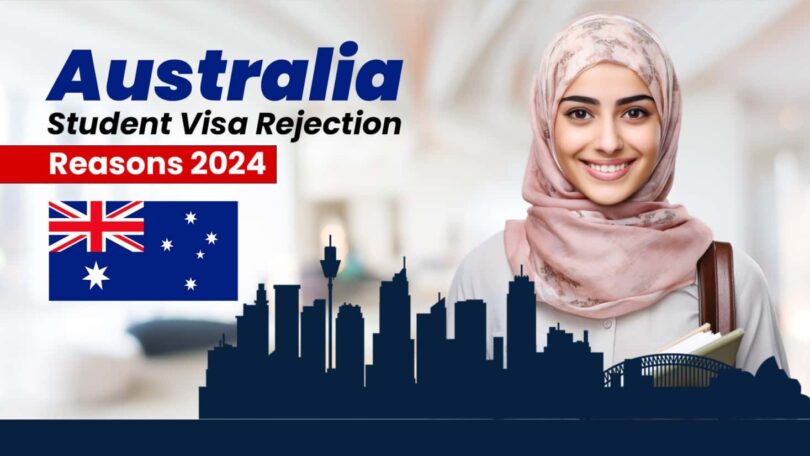With its world-class institutions and active student life, Australia is an ambitious destination for several desiring students globally. Hence, you could satisfy a significant roadblock, which is the refusal of an Australian student visa.
The top motives for Australian student visa refusal are the absence of GTE Internet, inaccurate documentation, etc. However, below is a view of what you could use to avoid them:
THE 7 MOTIVES FOR AUSTRALIA STUDENT VISA REFUSAL
We will dive into the top 7 Australian student visa refusal motives, as well as understand the general traps that candidates experience and the ways to prevent them from submitting a successful visa request.
- Not enough financial proof
Financial strength is an important measure. Candidates are required to ascertain they can protect tuition payments, living costs, and return travel expenses. Based on recent estimations, nearly 25 percent of student visa rejections are because of inappropriate financial documentation.
- Incomplete or inaccurate documentation
Incomplete forms or omitted documents usually result in refusal. About 18 percent of rejections come from documentation problems. Make sure all needed paperwork is completed, correct, and presented early.
- Absence of Genuine Temporary Entrant (GTE) Intent
The Genuine Temporary Entrant condition evaluates whether the candidate truly plans to remain temporarily in Australia for study purposes. Suspicions concerning this plan contribute to about 22 percent of the rejections.
- Inappropriate English Language Skill
Candidates are required to satisfy the English language skills conditions via identified exams such as IELTS or TOEFL. Falling short of the needed points records for nearly 15 percent of the visa refusals.
- Poor educational histories
Educational transcripts and certifications applicable to the selected program are examined. About 10 percent of the rejections result from inappropriate educational transcripts.
- Health and character conditions
Candidates are required to satisfy health and character measures. Problems such as untreated medical requirements or criminal history can result in refusal, contributing to nearly 5 percent of rejections.
- Past visa records
A record of past visa rejections or revocations can sadly affect a new application. This aspect is recorded for nearly 5 percent of student visa refusals.
KNOWING THE AUSTRALIA STUDENT VISA REFUSAL RATE
The Australian student visa refusal rate changes yearly, affecting different aspects. The current obtainable information indicates that the refusal rate is about 13.6% for student visa requests. This demonstrates that out of every 100 candidates, nearly 14 go through refusals. Knowing these estimations can assist candidates in getting ready for their requests and prevent regular traps.
WHAT TO DO AFTER AUSTRALIA STUDENT VISA REJECTION
Feel free to if your student visa Australia refused status becomes a reality. Below is a step-by-step manual on what you should do:
Step 1: know the motives for rejection
Check the rejection notice carefully to know the particular motives for refusal. This will direct your next stages.
Step 2: Contemplate a student visa rejection appeal in Australia
If you assume there was a mistake in the evaluation, you might have a basis to appeal the judgment. Consult with a migration agent or lawful counselor to investigate this alternative.
Step 3: Correct and apply again
In your new request, address the motives for the first refusal. Ensure that all the documents are concluded and satisfy the visa conditions.




